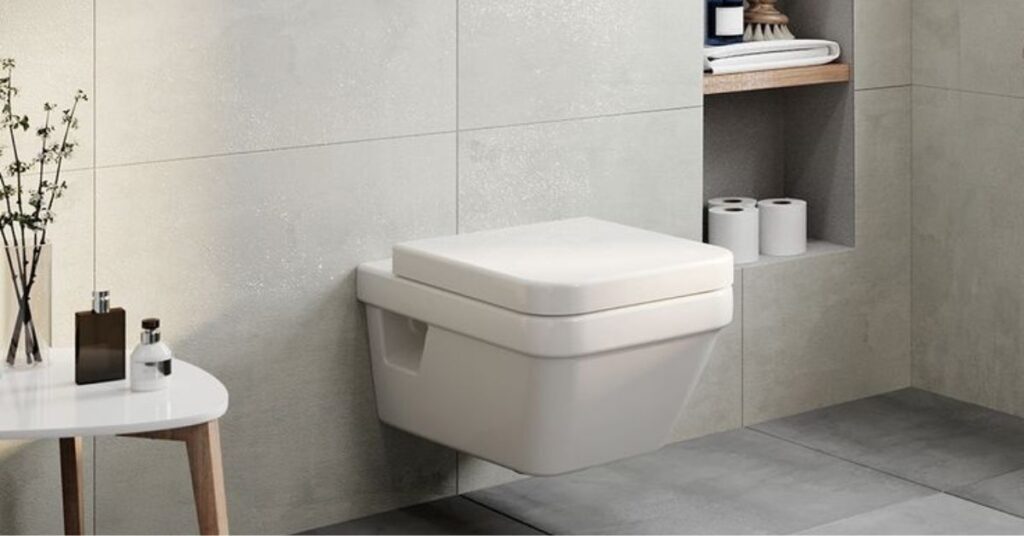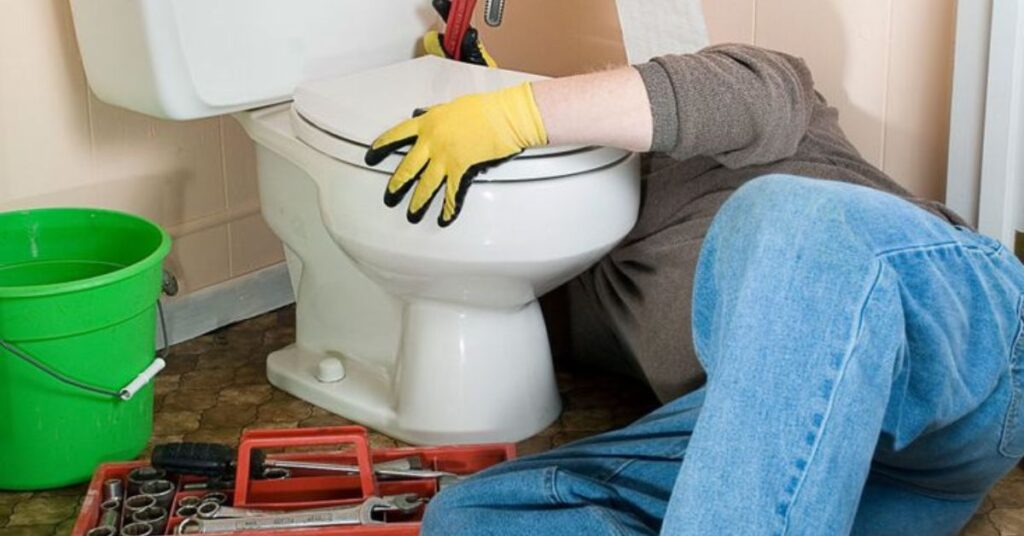Installing a toilet depends on the type of toilet and your experience level. A professional with the right tools and expertise can complete a straightforward replacement or close-coupled toilet in 1 to 2 hours. Complex installations like wall-mounted toilets with concealed cisterns may take a full day.
Understanding the Basics of Toilet Installation
From my own experience as a homeowner, I’ve seen how toilet installation might look simple but has many important steps—like aligning the toilet bowl, getting a tight seal, and checking every small detail. Each part plays a big role in keeping the bathroom functional and leak-free for the long run. Understanding the nuances and aspects of the process—from fitting the base to testing the functionality—is essential if you want it done right.
The Importance of Proper Toilet Installation
Installing a toilet correctly is key to efficient plumbing and avoiding leaks, while also boosting the bathroom’s aesthetics by bringing more comfort and visual appeal to the space. From what I’ve seen, a poor or incorrect installation often causes issues like wobbling, structural damage, and can lead to costly headaches down the road.
When a toilet is well-installed and properly fitted, it delivers reliable functionality and greatly contributes to the room’s ambiance, reflecting quality craftsmanship and a strong sense of reliability that lasts over time.
Related:
How to Clean Walls the Right Way – Don’t Paint Over It!
10 Cleaning Mistakes You Need to Stop Making at Home
Signs You Need a New Toilet
Not every toilet lasts forever—and noticing the early indicators can help you maintain a more functional and efficient bathroom without waiting for full breakdown. Based on personal experience, here’s how I usually spot when a replacement is truly necessary:
- Cracks or leaks around the bowl or tank are clear signs that an installation might be due soon.
- A wobbling, unstable, or unsteady base often means issues with mounting bolts or the floor beneath.
- Discoloration, staining, or persistent marks suggest internal inefficiency or wear.
- If the toilet is constantly running or working continuously, it could be a faulty flapper or other internal part failure.
- Outdated, inefficient models should be swapped with modern, high-efficiency ones to reduce maintenance and water usage.
Addressing these signs promptly not only improves functionality, but also enhances comfort, supports better hygiene, and revitalizes the look and feel of the space. Upgrading at the right time simply makes everything work better.
Tools Needed for Toilet Installation
To make the installation process smooth and efficient, it’s essential to gather all the necessary tools before you start. From my own installs, I’ve learned that having the right items at your disposal not only makes the job easier, but ensures a professional finish and a watertight seal for your toilet setup. Each tool serves a specific purpose, from tightening parts to securing the base properly—investing in quality makes all the difference.
- Adjustable wrench
- Screwdriver
- Toilet wax ring
- Nut driver
- Bolts and washers
- Tape measure
- Hacksaw
- Caulking gun
- Silicone caulk
Estimating the Time Required for Toilet Installation
When asking how long to install toilet, know that the time it takes to fit one can vary based on multiple factors that directly influence the overall installation process. The average duration differs for professional versus DIY installations depending on experience.
From my own work, I’ve found it’s important when considering the time required to account for the intricacies of each step—from preparing the area to ensuring proper alignment and a solid sealing. Each part plays a crucial role in determining how smooth the job goes.
Even small delays add up, and the total task time really depends on how efficiently every installation detail is handled. Once all’s done right, the job usually wraps within the needed window.
Factors Influencing Installation Time
Wondering how long to install toilet? It depends on many factors like your experience, the condition of the space, and any unforeseen issues that may impact the installation timeline.
- Experience and expertise level of the person doing the installation
- The condition of existing plumbing, especially if there are corroded pipes or uneven flooring
- Type of toilet being installed, and if any modifications are required
- Additional work like moving the water supply line or replacing older lines
- Presence of challenges that are hard to predict but must be overcome for a clean install
Average Time for Professional Installation
An experienced professional typically completes toilet installation in about 1 to 2 hours. With the right expertise and tools, they work efficiently to ensure a smooth and reliable installation process, delivering quality results with minimal hassle.
Average Time for DIY Installation
When handling the installation yourself, expect it to take longer than a professional job. Typically, DIY installations last between 2 to 4 hours, influenced by your plumbing experience and any unexpected challenges that arise during the process.
Step-By-Step Understanding the Installation Process
Replacing a toilet might seem complicated, but with the right knowledge and expertise, the process is fairly straightforward for a professional plumber. It typically takes an average of a few hours to remove the old and install the new one. When wondering how long to install toilet, knowing each step helps set realistic expectations:
- Shopping for a toilet that meets your requirements and fits your bathroom space
- Turning off the water to avoid flooding, then emptying the tank
- Unscrewing bolts and removing the old toilet from the floor
- Inspecting the flange for any wear, damage, or if it’s cracked or corroded—replace if needed
- Setting a new wax ring for a watertight seal before placing and securing the new toilet
- Reconnecting the supply line and checking the pipe fitting and drain pipe condition
- Testing by flushing and watching carefully for any leaks
This detailed yet efficient installation process relies on familiarity with plumbing, septic systems, and the right parts to ensure a solid, flawless result done faster and smoothly.
Common Toilet Installation Issues
Despite careful installation, issues may still occur. Below are some frequent problems and tips on how to fix them:
Handling Leaks after Installation
If you notice water pooling near the base of your toilet, it may indicate a faulty wax ring or loose connections. It’s important to double-check and ensure the wax ring is properly compressed. Carefully tighten any loose parts and continue to monitor for further leaks to keep your bathroom dry and functional.
Fixing Toilet Wobbling Quickly
If your toilet wobbles, it usually means the flange or bolts aren’t properly tightened or the base isn’t fully secured to the floor. To stabilize it, make sure the bolts are snug but not over-tightened—if the problem persists, consider using shims between the toilet base and floor to improve the fit and secure the connecting points better. From my experience, addressing wobbling early ensures a smoother installation and lasting stability.
Fixing Common Flushing Problems
Flushing issues often come from clogging, damage, or mineral deposits blocking jet holes and the rim feed, causing inadequate water flow. To improve and restore proper functionality, it helps to inspect the tank, flush handle, and flapper valve, then clean, adjust, or replace parts as needed. Sometimes, simply using a brush or a wire hanger to clear obstructions can make the flush smoother.
If the flush feels incomplete or the chain is tangled or misaligned, take time to realign and ensure the sealing is tight. Keeping the water level at the recommended height also plays a crucial role. These small fixes can save time and avoid bigger repairs, helping keep your toilet working efficiently after installation.

Installing Wall-Mounted Toilets: What You Need to Know
Installing wall-mounted toilets requires some special consideration compared to traditional models. The installation process can be more complex because the wall must be sturdy enough to support the weight of the toilet. This often means reinforcing the wall or adding support brackets to ensure a safe and reliable setup. Following the manufacturer’s instructions carefully is crucial when aligning and attaching the mounting hardware like brackets and screws.
Once secured, it’s important to properly connect the water supply line and check for any leaks. Wall-mounted toilets offer a stylish, space-saving solution for modern bathrooms, but the added complexity can slightly extend the time it takes to install compared to floor-mounted toilets. From my experience, thorough preparation and attention to these key steps make the process smoother and ensure a secure, long-lasting fit.
Choosing the Right Toilet for Your Bathroom
Selecting the perfect toilet comes down to your specific needs and style. Here are some common types to think about:
- One-piece toilets: sleek design, easy to clean
- Two-piece toilets: budget-friendly, widely available
- Dual flush toilets: conserve water with different flush options
- Wall-mounted toilets: save space, modern look, require extra installation
- Smart toilets: advanced features, enhanced comfort, improved hygiene
Why Hiring a Plumber Makes Sense
Hiring plumbers ensures your toilet is installed properly and quickly, avoiding common issues like wobbles, leaks, or damage that can lead to costly repairs and higher utility bills. Their training and specialized tools help handle the process with minimal risks and maximum efficiency.
While the DIY route might seem tempting, it often results in poorly done jobs that don’t last. Experienced professionals follow strict protocols and deliver stable setups designed for longevity, sometimes lasting over 50 years with proper care.
If you’re wondering how long it takes to install a new toilet, hiring a plumber not only saves time but also guarantees better results and peace of mind. It’s a smart investment that prevents headaches and keeps your bathroom safe and functional.



